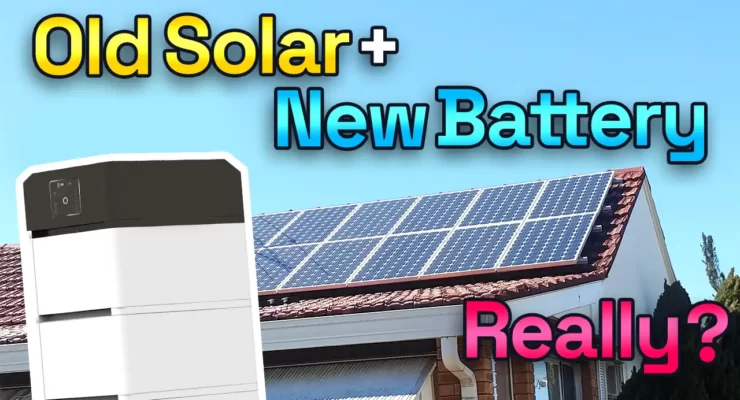Fast read
Adding a battery to an existing solar system is achievable through three main methods: AC coupling, storage-ready systems, and DC-coupled systems. AC coupling is the most flexible and cost-effective, requiring an additional off-grid inverter to work alongside your existing grid-tied inverter.
Storage-ready systems replace your grid-tied solar inverter with one optimised for battery storage, while DC-coupled systems require a new hybrid battery inverter to directly charge the battery with DC power from solar panels. Before adding a battery, consider your goals such as energy arbitrage, blackout protection, or participating in a Virtual Power Plant.
Also, assess your solar system's winter performance to gauge its capacity to charge the battery year-round. Consulting multiple reputable solar companies for customised quotes is recommended.
How can I upgrade my solar system?
If you have recently purchased a home with a smaller solar system or have had a 3 to 5 kW system for a few years and loved it, you may want to upgrade your solar system and add even more panels or a battery. Unfortunately, this is not as straightforward as adding some palings to a backyard fence. You definitely need an experienced solar installer to assist you in this endeavour.
Overall this journey is like renovating a house, often it is easier to build a new solar and battery system, than trying to upgrade your solar system, adding bits and pieces to an existing design. However, it is possible and here are the explanations.
How to add more solar panels
When did you get your original panels installed?
Over time solar technology and designs have developed, as have technical standards and rules. This means that some older solar systems are not compatible with modern solar installation rules.
The solar panels made during this time are perfectly fine, but regulations often prohibit the integration of more modern solar panels with them. This means that if you bought the solar system during this time or the system, you will run into issues.
While the Government allows older solar systems to operate, unfortunately, these solar systems can’t be upgraded. You can create an entire new system on your roof with modern panels, and run it separately from your old solar system. This approach will not make a singular system, but you will have two different solar systems providing electricity to your home.
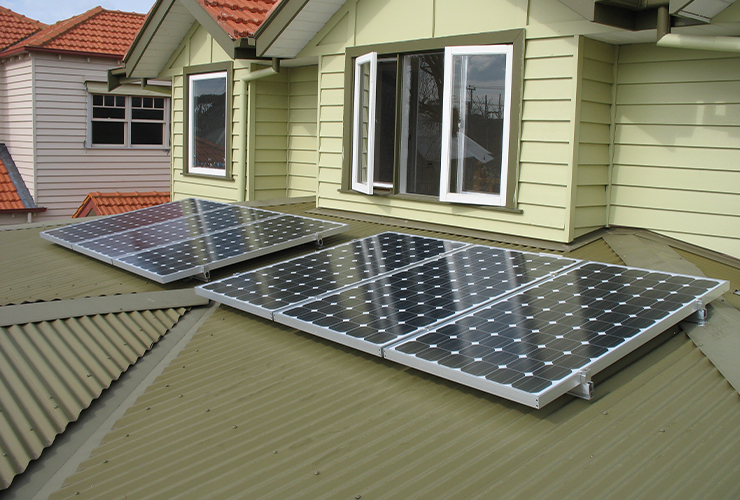
What if I have Enphase microinverters?
Should you have microinverters, and your solar system is relatively new (less than 5 years) then upgrading your solar system is no issue at all, and you can add more newer watt class panels and more microinverters.
What if I have a string inverter?
You will most likely have to upgrade your solar inverter if you expand your solar system. The reason is either technical, meaning your inverter is not conforming to the latest technical rules if older than let’s say a few years, or it will not be able to handle the capacity to add too many extra solar panels.
Contact the manufacturer of your solar inverter, or a local installer or study the product datasheet to work out how much the inverter can be oversized. For example, some inverters can be oversized by 133% of what it was originally rated as.
This means if you had a solar inverter rated at 5 kW or 10 kW, the absolute maximum wattage of solar panels all added can be 6.66 kW or 13.33 kW. In many cases the inverter has already reached its maximum capacity – so unfortunately you need a new and bigger capacity unit.
Do I actually generate enough solar electricity production to charge my battery all year round?
If you have an existing solar power system, the first thing to do is to look at how much electricity the solar system is producing that could be supplied to charge the battery. This would be the amount of electricity the solar system is currently exporting to the grid daily.
If you simply look at average daily exports or peak summer exports, you will likely find that your solar system will not have the capacity to charge the battery during the winter months.
For instance, to acquire a Tesla Powerwall (13.5kwh capacity), it is advisable to have approximately 15kwh of exported electricity per day during winter.
What do you want the battery to do?
You will also want to consider what you actually want the battery to do when the battery is installed. What is the desired outcome or result from having a battery then consider if adding a battery to the existing solar system will achieve this or whether you need to consider other options such as upgrading the capacity of the solar system to have a larger home battery to suit the desired result that you are looking for.
Arbitrage
That is storing your excess solar power generated in the day to use during peak demand periods and overnight. For this case, it is best to consider how much power you use at night and size the battery according to this.
Blackout protection
If you experience blackouts you may want to have the batteries provide power to the home during a blackout. If this is something you want, make sure you specify this to your solar company when they quote as not all battery solutions are able to provide blackout power.
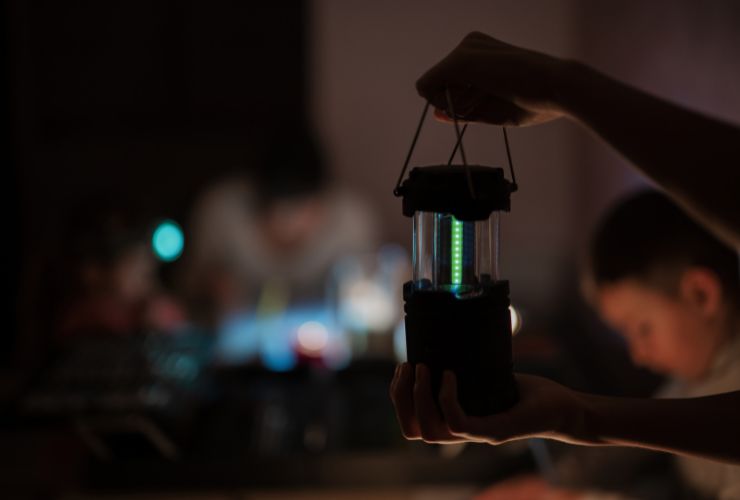
Virtual power plant (VPP)
This is an emerging option with many innovative solar retailers where you can sign up to your energy company for them to be able to supply power from your solar battery to the grid and pay you a fee for the use of that electricity.
Typically, solar panel systems much under 5kw capacity do not have the excess capacity to charge even a modest battery of 6kwh on a daily basis. Most solar systems consist of at least 6.6kw of panels, with many installations including batteries of up to 10kw or larger.
Do you absolutely need solar battery storage?
A solar battery acts as an electricity reservoir. Surplus electricity from your solar panels will be held in the battery, and deployed for use when needed. While this process sounds great, it may not be necessary for you.
Factors such as solar exposure, electricity usage patterns, grid tariffs, and nuances of the solar grid system influence the need for a battery. The best option is to contact a trustworthy solar professional to get their opinion.
Return on investment
The return on investment with a battery is completely unique to each household. This is because how much you use the electricity stored in your battery is determined by your energy usage patterns. Also, do you put EV charging into the ROI calculation? In such a case, a solar battery’s ROI comes down significantly.
Influences on investment
Three main influences make investing in a battery extremely enticing. These are your geographical location, fluctuating electricity feed-in tariffs and government incentives. If these three factors are in your favour in your current situation, the investment is likely worthwhile.
As previously mentioned, if you believe you are in the right situation, contact a trustworthy solar professional. They can provide some insight into the decision.
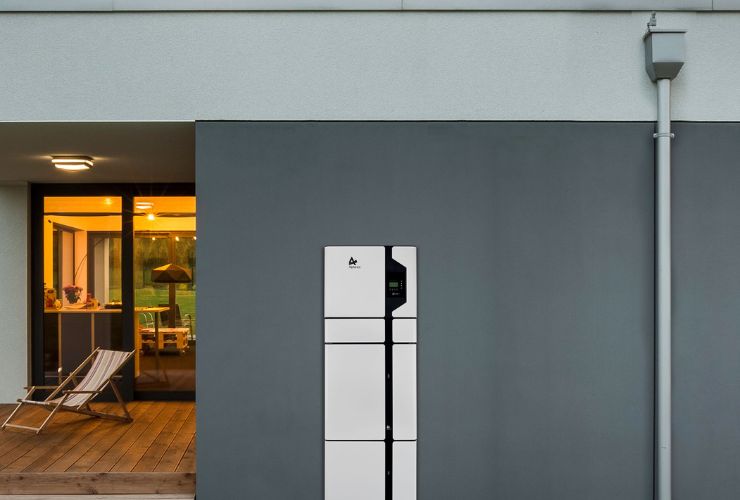
So how can I upgrade my solar system with a battery?
Before you worry about all the technical aspects determine your needs and have your solar system’s compatibility with AC and DC batteries assessed. It’s definitely crucial to research this area so you understand your energy storage needs and which kind of batteries would suit them.
- AC batteries are usually easier to retrofit to existing solar systems because you can connect them directly to the AC wiring of the house.
- DC batteries, which require a compatible inverter to convert DC electricity from the solar panels and battery to AC electricity for use in the home.
The easiest step forward is to select an AC-coupled battery solution. A number of brands and options are available on the Australian market including the popular Tesla Powerwall, Enphase, and Sonnen.
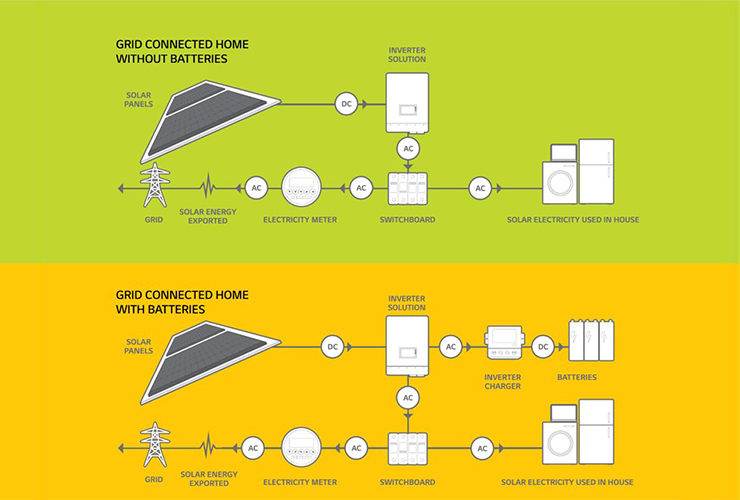
The technical side of upgrading your solar system
In the AC-coupled battery solution, your solar PV system still uses your traditional grid-tied inverter. However, you then pair your original inverter with an off-grid inverter or ‘storage inverter’ (sometimes, as in the case of Tesla, built into the unit) that works to charge the new batteries.
Grid-tied inverters (the one you already have on your existing solar system) work hand in hand with the grid. They monitor the electrical frequency and voltage of the grid and shut off if it lowers, for example, if there is a blackout. Moreover, grid-tied inverters allow you to feed energy back into the grid.
